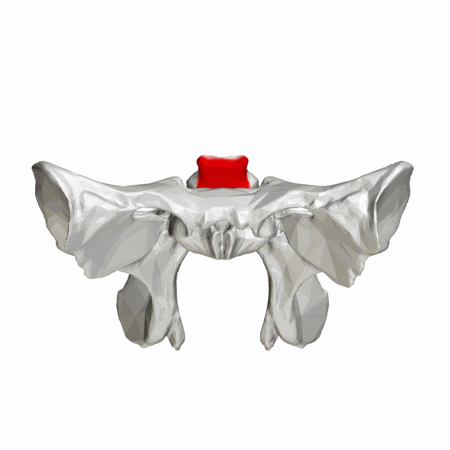The Turkish Seat
April 20, 2015
The Turkish Seat, also known as the Sella Turcica, forms a bony throne for one of the most important protagonists in our ambitious desire for a smaller human species: the pituitary gland. It is here within the deepest part of the cavity (called the hypophysial fossa) above the Turkish Seat that this small gland, the size of a fingertip, synthesises growth hormone. Sella Turcica is part of the sphenoid bone towards the front middle of the skull, a few centimeters behind the eyes, where it seems to direct our gaze towards the ever larger. The sphenoid bone somewhat resembles a 3d printed Rorschach test reminding us that this obsession with growth is something we’ll need to overcome, if we are to truly grow as a species.
It’s going too far to hold the Turkish Seat accountable for the destructive desires that it helps to accommodate, yet we cannot help fantasising about what would happen if we were to restrict the pituitary‘s physical space. If we’d create a slightly smaller chair for all this productivity would things slow down? There’s something wonderfully odd in the idea of downsizing the seat for the actual engine that creates the seat: something self-fulfilling. Would pituitaries respond like fish in a small aquarium?